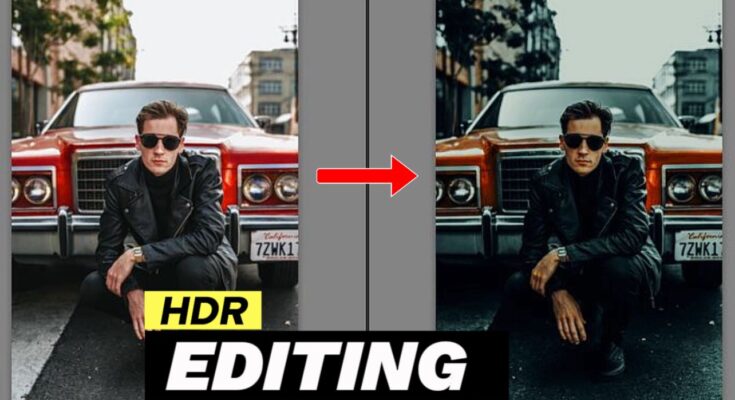Time Cut Smooth Welcome to the world of mesmerizing slow-motion videos, where every frame tells a story in exquisite detail. Have you ever wondered how filmmakers achieve that buttery smooth slow motion effect that leaves us breathless? The secret lies in the art of Time Cut editing and the magic touch of HDR technology. In this blog post, we will dive into the realm of Time Cut Smooth Slow Motion HDR Editing, uncovering its benefits, providing step-by-step guides, sharing expert tips and tricks, and highlighting common pitfalls to avoid. Get ready to elevate your video creations to a whole new level!

Benefits of Using Time Cut Editing for Slow Motion
Are you looking to take your slow-motion videos to the next level? Time Cut editing might just be the game-changer you need. By incorporating Time Cut techniques into your editing process, you can achieve smoother transitions and more dynamic visual storytelling.
One of the key benefits of using Time Cut editing for slow motion is the ability to create seamless sequences that keep viewers engaged from start to finish. With precise cuts and timing adjustments, you can enhance the flow of your footage and maintain a captivating pace throughout.
Additionally, Time Cut editing allows for greater control over the overall rhythm and energy of your slow-motion videos. By strategically trimming and rearranging clips, you can build tension, evoke emotion, and deliver a truly immersive viewing experience for your audience.
Say goodbye to clunky transitions and awkward pauses – with Time Cut editing in your toolkit, you’ll have the power to craft polished slow-motion masterpieces that leave a lasting impression on viewers.
Step-by-Step Guide to Creating Smooth Slow Motion with Time Cut
In the world of video editing, creating smooth slow motion with time cut is a game-changer. To start, import your footage into your editing software and place it on the timeline. Next, identify the specific part of the clip you want to slow down for that dramatic effect.
Then comes the crucial step – adding keyframes to control the speed ramping. By strategically placing keyframes at intervals, you can smoothly transition from regular speed to slow motion seamlessly.
Adjusting the speed curve between keyframes will determine how gradual or sudden the slowdown occurs. Experiment with different curves to find what works best for your desired effect.
Don’t forget about audio adjustments! Syncing sound effects or music to match the slowed-down visuals can enhance the overall viewing experience.
Fine-tune any transitions and effects to polish up your masterpiece before exporting. With practice and experimentation, mastering smooth slow motion with time cut will take your videos to new cinematic heights.
The Role of HDR in Enhancing Slow Motion Videos
HDR, or High Dynamic Range, plays a crucial role in enhancing slow motion videos by adding depth and vibrancy to the footage. By capturing a wider range of colors and details, HDR brings out the richness of shadows and highlights in each frame.
When applied to slow motion content, HDR elevates the visual experience by intensifying the contrast between light and dark elements. This results in more visually striking imagery that captivates viewers’ attention and creates a sense of immersion.
Moreover, HDR editing allows for greater flexibility in adjusting tones and colors during post-production. This means that creators can fine-tune specific aspects of their slow motion videos to achieve the desired mood or aesthetic.
Integrating HDR into slow motion editing workflows enhances the overall quality of the footage, making it more engaging and impactful for audiences to enjoy.
Tips and Tricks for Effective HDR Editing in Slow Motion Videos
When it comes to creating stunning slow motion videos with HDR editing, there are a few tips and tricks that can help take your footage to the next level. First and foremost, pay attention to the lighting in your shots – HDR works best when there is a good balance between highlights and shadows.
Another tip is to experiment with different HDR settings to find the look that best suits your video. Don’t be afraid to play around with saturation, contrast, and brightness levels until you achieve the desired effect.
Additionally, consider using masking techniques in your editing software to selectively apply HDR effects to specific areas of your video. This can help create more dynamic and visually appealing shots.
Don’t forget about color grading – subtle adjustments can make a big difference in enhancing the overall look and feel of your slow motion footage. Experiment with different color palettes until you find one that complements the mood you’re trying to convey.
Common Mistakes to Avoid When Using Time Cut and HDR Editing
When diving into the world of time cut and HDR editing for slow motion videos, it’s important to be aware of common mistakes that can hinder the quality of your final product. One common mistake is overdoing the HDR effect, resulting in an unnatural and overly saturated look. Remember, subtlety is key when enhancing your slow-motion footage with HDR.
Another mistake to avoid is not paying attention to the flow of your time cuts. Abrupt transitions can disrupt the visual continuity of your video, so make sure each cut serves a purpose and helps maintain a smooth viewing experience for your audience. Additionally, neglecting proper color correction before applying HDR effects can lead to inconsistent tones throughout your video.
Overlooking audio considerations can also impact the overall quality of your slow-motion creation. Sound plays a crucial role in enhancing the viewer’s experience, so don’t forget to fine-tune audio levels and add appropriate sound effects where needed. By avoiding these common pitfalls, you can elevate your slow-motion videos with seamless time cut and HDR editing techniques.
Conclusion: Elevate Your Slow Motion Videos with Time Cut and HDR Editing
Elevate Your Slow Motion Videos with Time Cut and HDR Editing
By incorporating Time Cut editing techniques and utilizing HDR enhancements, you can take your slow-motion videos to the next level. The seamless transitions provided by Time Cut allow for a smoother viewing experience, while HDR adds depth and vibrancy to your visuals.
With the step-by-step guide, tips, and tricks shared in this article, you now have the tools to create captivating slow-motion videos that stand out from the rest. Remember to avoid common mistakes such as over-editing or neglecting proper color grading.
Experiment with different styles, effects, and settings to find what works best for your content. Whether you’re a beginner or an experienced videographer, mastering Time Cut and HDR editing will undoubtedly enhance the quality of your slow-motion videos.
So go ahead, unleash your creativity, and elevate your storytelling with Time Cut smooth slow motion HDR editing. Your audience will thank you for it!



